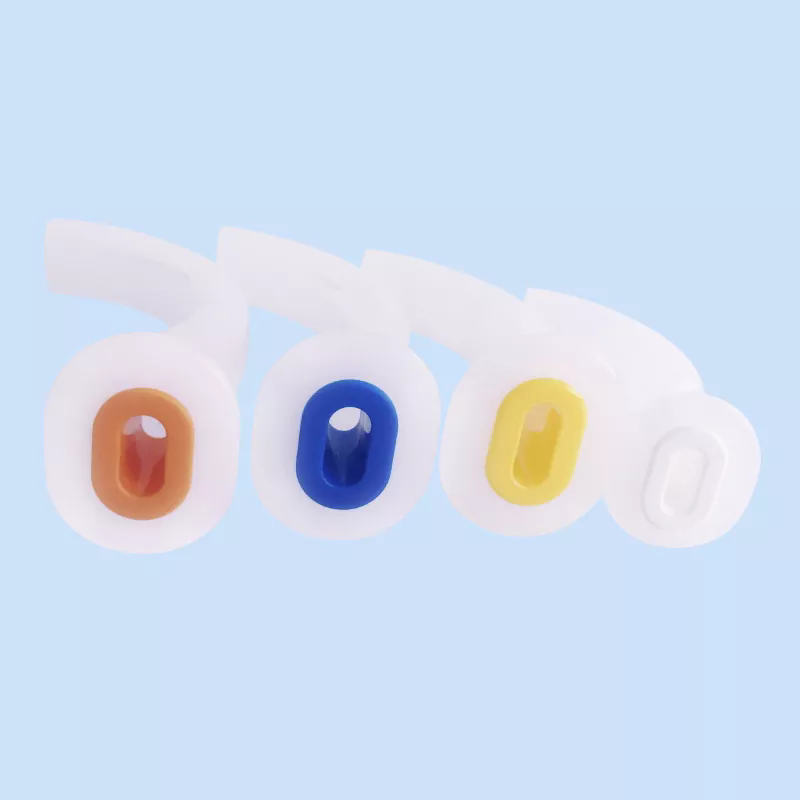Understanding Disposable Guedel Airways: A Critical Tool for Emergency Airway Management
2024-09-20
In medical emergencies, the ability to quickly and effectively manage a patient’s airway can be a matter of life and death. Disposable Guedel airways are essential tools in such situations, providing a reliable solution for maintaining an open airway in unconscious or semi-conscious patients. This blog explores what disposable Guedel airways are, their benefits, and how they are used in critical care and emergency settings.
What is a Disposable Guedel Airway?
A disposable Guedel airway is a medical device designed to maintain an open airway in patients who are unable to breathe on their own or are at risk of airway obstruction. Named after the French physician André Guedel, who pioneered its design, this device is a type of oropharyngeal airway (OPA). It is typically made of lightweight plastic or rubber and is intended for single use, which helps minimize the risk of cross-contamination and infection.
Key Features of Disposable Guedel Airways
1. Anatomical Shape
The Guedel airway is designed with a curved shape that fits the natural contours of the pharynx and tongue. This design helps keep the airway open by preventing the tongue from obstructing the throat.
2. Size Variety
Disposable Guedel airways come in various sizes to accommodate different patient needs. Sizes are generally categorized by color codes, ranging from neonate to adult, allowing for appropriate selection based on the patient’s age and size.
3. Material
Made from medical-grade plastic or rubber, disposable Guedel airways are lightweight and flexible. The materials used ensure ease of insertion and comfort while providing effective airway management.
4. Single-Use Design
The disposable nature of these airways ensures that each device is used only once, reducing the risk of infection and ensuring optimal hygiene standards.
Benefits of Disposable Guedel Airways
1. Effective Airway Management
The primary benefit of a Guedel airway is its ability to maintain a clear and open airway, which is crucial for effective ventilation. By preventing the tongue from obstructing the airway, it facilitates unobstructed airflow to the lungs.
2. Hygiene and Safety
Being disposable, these airways are used only once, which greatly reduces the risk of cross-contamination and infection. This is particularly important in emergency and critical care settings where the risk of infectious disease transmission is high.
3. Ease of Use
Guedel airways are straightforward to insert and use, making them accessible for healthcare providers with varying levels of experience. The curved design aids in proper placement and minimizes the chance of causing additional trauma to the patient’s airway.
4. Variety of Sizes
The availability of various sizes ensures that the airway can be selected to fit the patient’s specific needs, from neonates to adults. This adaptability makes Guedel airways versatile and suitable for a wide range of patients.
5. Cost-Effective
As disposable items, Guedel airways are cost-effective due to their single-use nature. They eliminate the need for cleaning and sterilization, reducing the overall cost of airway management in emergency situations.
How to Use a Disposable Guedel Airway
1. Assess the Patient
Before inserting the airway, ensure that the patient is unconscious or semi-conscious and unable to maintain their own airway. Perform an initial assessment of the patient’s airway and breathing status.
2. Select the Correct Size
Choose an airway size appropriate for the patient’s age and size. Refer to size charts or color codes to ensure proper selection.
3. Position the Patient
Position the patient in the supine position (lying on their back) with their head tilted slightly backward. This position helps open the airway and facilitates the insertion of the Guedel airway.
4. Insert the Airway
Gently insert the Guedel airway into the patient’s mouth, placing the tip of the airway into the back of the throat. Use a finger to guide the airway past the tongue and into the pharynx. Ensure that the airway is properly positioned and does not cause any discomfort.
5. Check for Proper Placement
After insertion, check that the airway is correctly positioned and that the patient’s breathing is unobstructed. Monitor the patient closely for any signs of airway obstruction or discomfort.
6. Monitor and Adjust
Continue to monitor the patient’s airway and breathing. If necessary, adjust the position of the Guedel airway or replace it with a different size if it is not providing adequate support.
When to Use a Disposable Guedel Airway
1. In Emergency Situations
Disposable Guedel airways are commonly used in emergency settings, such as during cardiac arrest, respiratory distress, or trauma situations. They provide immediate airway management to ensure effective ventilation.
2. During Medical Procedures
They are also used during certain medical procedures that require temporary airway management, such as during intubation or sedation.
3. In Pre-Hospital Care
Paramedics and emergency medical technicians (EMTs) use Guedel airways in pre-hospital care settings to manage patients with compromised airways before they reach the hospital.
4. In Critical Care
In critical care settings, disposable Guedel airways are used to provide continuous airway support for patients who are unable to breathe independently.
Conclusion
Disposable Guedel airways are an essential tool for effective airway management in both emergency and critical care settings. Their anatomical design, ease of use, and hygienic single-use nature make them a reliable choice for maintaining a clear and open airway. By understanding their features, benefits, and proper usage, healthcare providers can ensure optimal patient care and improve outcomes in critical situations. Embrace the advantages of disposable Guedel airways and enhance your ability to manage airways effectively and safely.



